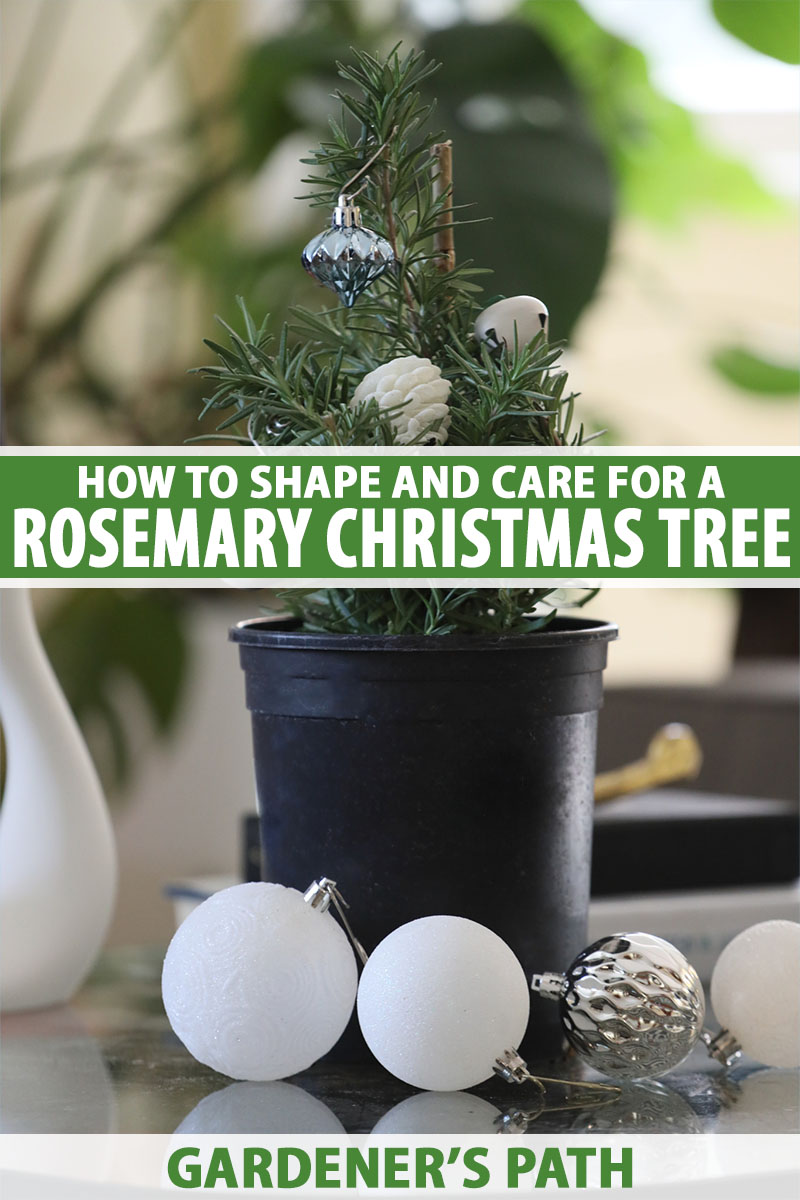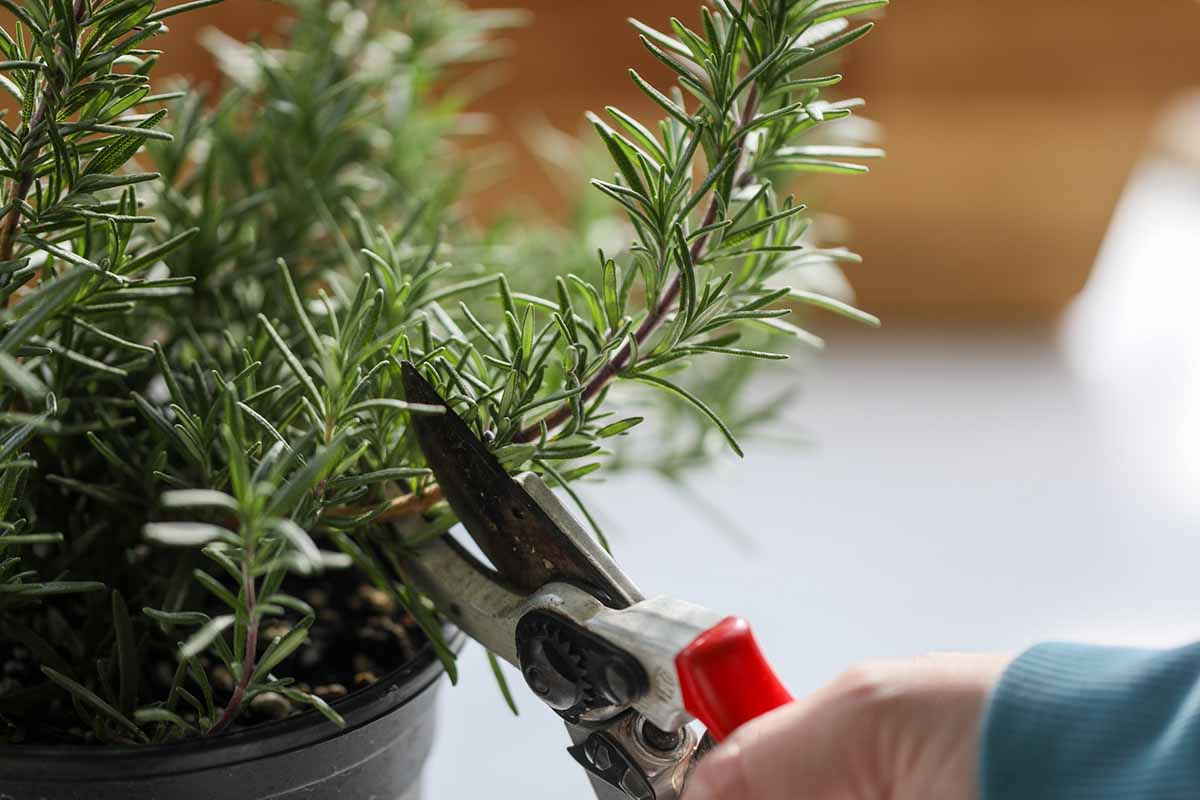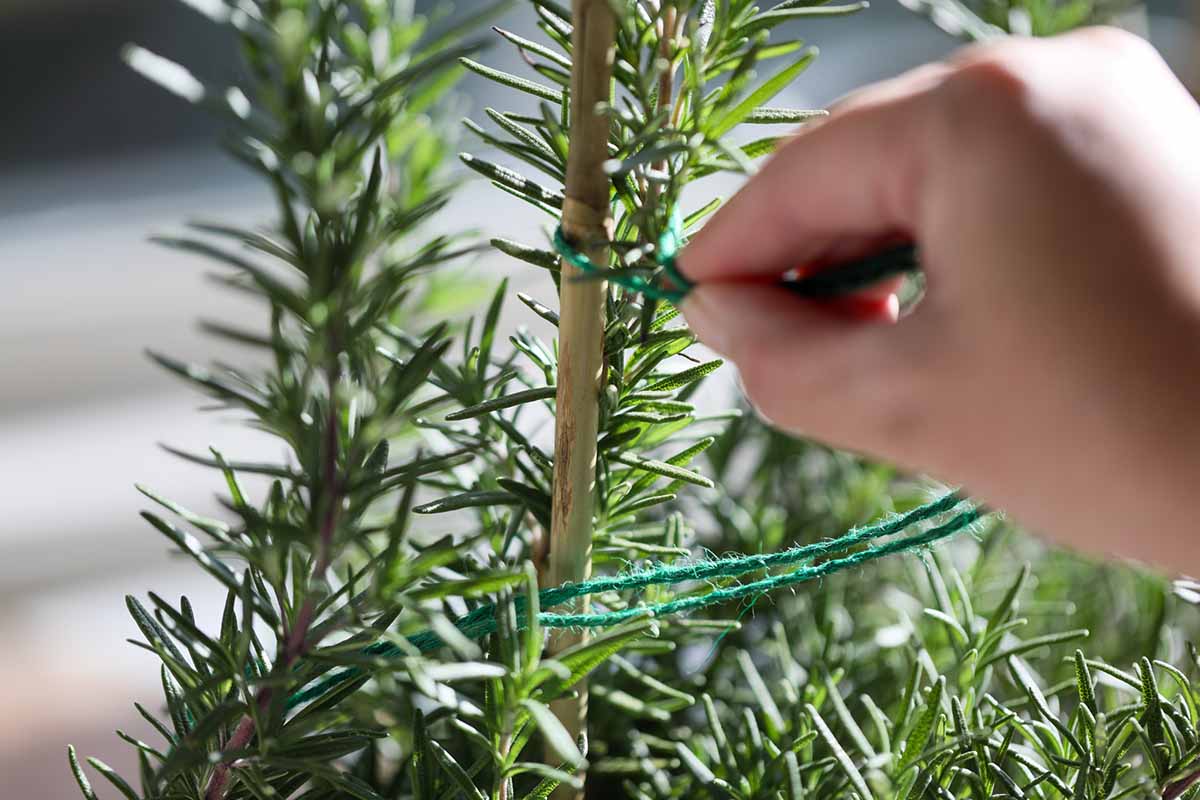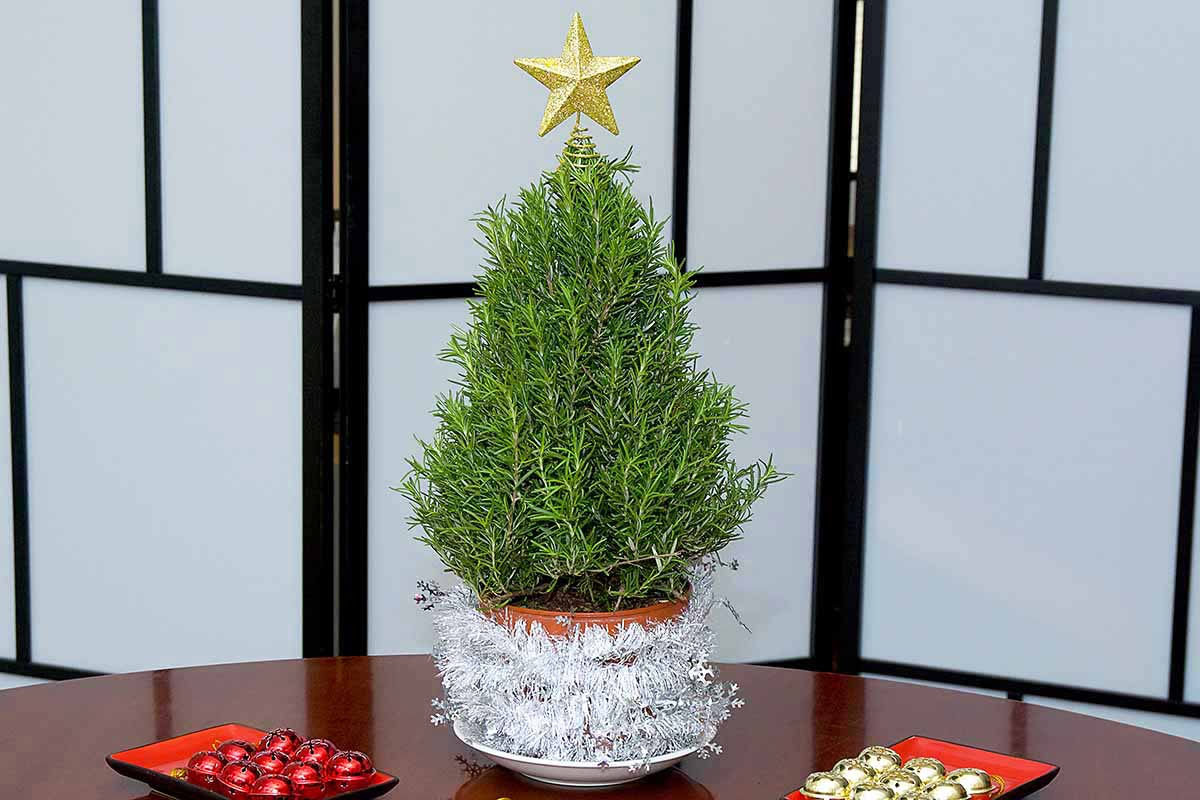I’ll admit it, I have a little bit of guilt each year when I buy a Christmas tree and toss it out a few weeks later. Sometimes, I buy a potted tree and then put it in my yard or give it to a friend. Know what else works well without the guilt?
A rosemary Christmas tree.
Know what else it works well for? Those who don’t have a large space for a full-sized tree.

We link to vendors to help you find relevant products. If you buy from one of our links, we may earn a commission.
Right around the holidays, you can find rosemary bushes pruned into that familiar Christmas tree shape.
If you get your hands on one of these, it’s just a matter of keeping it alive throughout the holidays. Or, if you want to go the DIY route, you can buy a shrub and shape it yourself.
Rosemary isn’t a huge fan of growing indoors year-round, so if you can take it back outside once the weather warms up, it will be much happier.
But if you intend to keep it inside, be sure to check out our guide to growing rosemary indoors.
Here’s what we’ll go over to give you the tools and knowledge you need to grow rosemary as a Christmas tree:
What You’ll Learn
Ready to bring the cutest little Christmas tree to your space? Let’s start with how to source one.
Bring Your Plant Home
If you don’t buy it pre-shaped, you’ll need to purchase your plant several months in advance so you have plenty of time to shape it yourself.
Actually, you should buy it a few years in advance, because those pre-shaped trees take quite a long time to create.

Pre-shaped specimens can often be found in many stores around the holiday season.
You can grab one of these anytime you stumble across them, though they tend to be healthier the earlier it is in the season. That is, unless the store constantly replenishes its stock.
They can also be found online as well.
This plant from the Three Company Store, available at Amazon is a foot tall and about four inches wide, making it a cute start.

If you keep it alive for a few years and maintain the shape, it could double in size and make an even bigger impact.
If you decide to buy an unshaped plant, look for one that has a naturally upright shape and is more narrow at the top than the bottom.
When you take your plant from the store to the car, try to keep it covered if the temperatures are below 40°F. Rosemary and I have that in common – we both suffer in cold temperatures.
Once you get your plant home, give it a nice long drink of water if the soil feels dry. Stores do their best to keep plants happy, but they can’t provide the same custom care you can.
Remove any outer plastic or decorative packaging so the water can drain away from the bottom of the container.
Caring for a Rosemary Christmas Tree
As I mentioned, rosemary doesn’t love being indoors. It prefers it when it’s downright cold at night, warm and sunny during the day, and with a moderate amount of humidity – around 50 percent.

Most houses don’t provide that. So, your rosemary shrub isn’t in the ideal conditions.
Perhaps the biggest challenge with growing this herb indoors is giving it enough sunlight. These plants need full sun whether they’re indoors or out.
Try to find a spot in your home with at least six hours of direct sunlight. If you can’t do that, provide supplemental lighting. If you are planning to keep the plant indoors just during the winter, you can squeak by with less light. An east-, west-, or south-facing window would be fine for a month or two.
If the plant starts to grow leggy, as is common in low light, just trim it back to encourage bushier growth until you can bring it outside for better sun exposure.
Now, let’s talk about water. Put the watering can away! Unlike many common houseplants, rosemary doesn’t need much water. Think of it as closer to a succulent rather than a pothos in terms of water needs.
When I was a kid, I started out with an indoor herb garden, as many kids do. I kept killing my rosemary plants, and my mom would indulgently pick me up another when she went to the market.
The issue wasn’t neglect. It was that I wasn’t neglectful enough. We typically don’t need to pamper our indoor herbs as we do our tropical houseplants. So resist the temptation to treat your rosemary as some fussy alocasia.
In other words, feel free to neglect the heck out of it.

If you decide to string lights on it, don’t use incandescent bulbs. They’ll heat up and burn the leaves. Use LEDs, which both provide light to the plant and stay relatively cool.
Once spring rolls around, consider taking your plant outside for the summer, and check out our guide for more information about growing rosemary.
Shaping
Shaping can take months or even years, so the sooner you start the better.
When you shape your plant, you don’t need to prune each branch individually. Use a pair of scissors and trim to create a somewhat smooth shape.

The trick to shaping your plant is to not do too much all at once. Your shrub will probably survive if you give it a dramatic haircut, but that’s not the way to achieve the pyramid shape you’re looking for without harming your plant.
First things first, go in with some scissors and just create a vague triangle shape. We’re not talking about a perfect Christmas tree form at this stage.
Just thin out the top while gradually going wider until you reach the base, which you shouldn’t trim at all at this point.
Give the plant a few more weeks and then trim it again, aiming to create the tree-like shape you want.
When you snip or pinch back your plant, it results in bushier growth. So don’t worry that you’re cutting too much off your plant – you aren’t going to create a big ugly bare patch. The plant will fill in any areas that have been over-zealously pruned.
And don’t forget, you can use the clipped branches to propagate new plants!
So here is what the process would look like. When you first get your plant home, remove any long outer branches that grow away from the main stem.
Then, choose a central stem to provide the height and secure it in place with a chopstick or bamboo stick to hold it straight and tall.

Look for nearby branches and stems that can act as the secondary support for the main stem. Trim these slightly to create a conical shape that’s narrow at the top and wider at the base.
Give the plant a few weeks to grow out, and then shape it some more. Keep pruning and shaping it regularly because the more you do the bushier and more dense the growth will be.
Don’t be afraid to remove any branches that just aren’t cooperating. New growth will fill in the area.
Once you have the right shape, add your lights and ornaments if you want.
If you can’t get it shaped in time, you can always tie it up with twine to fake the right shape.
Pests and Disease
Rosemary isn’t particularly delicate, but spider mites seem to find this herb more attractive when it is growing indoors. Spider mites prefer plants in dry, sunny areas, so you can see why they’d be drawn to it.
If you see fine webbing or yellow stippling on the leaves, your plant probably has spider mites.
Other than that, the biggest thing to watch for is root rot. I’m telling you, don’t overwater your plants. Rosemary doesn’t need that much and it certainly needs less than most other houseplants.
Happy Herbal Holidays!
Rosemary is the perfect miniature Christmas tree because it has a similar look to a pine or spruce with its needle-like foliage. It also has a fragrance that definitely strikes an evergreen note.

How will you be decorating your herbal holiday addition? My go-to is a string of popcorn and some fairy lights. What about you? Let us know in the comments section below!
And for more information about growing rosemary in your garden, check out these guides next:


